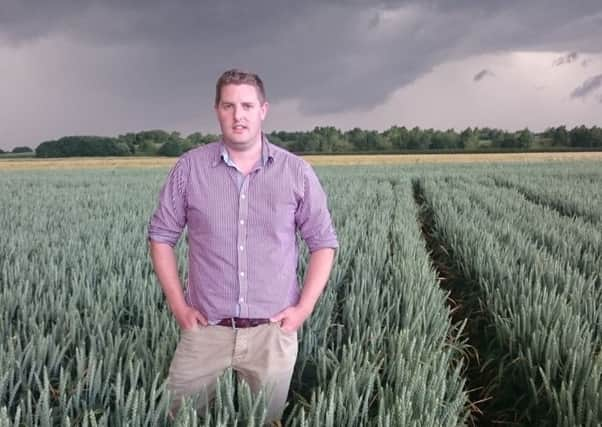Comment: Precise practice on Holy Grail trail


I am the fourth generation to farm at Turnhead, I am married to Sarah and we have a little boy who is tractor mad.
I’ve seen the farm grow from 350 acres to 750 acres, mainly owned, and we farm a range of soil types from riverside warp through to very light sand. Our cropping and rotations vary, depending on soil types, but consist of wheat, barley, oilseed rape, beans, sugar beet and potatoes, on a let basis.
Advertisement
Hide AdAdvertisement
Hide AdHaving been ‘born’ into farming, I see myself as being extremely privileged to have the opportunity to farm. With this privilege comes responsibility for looking after our most precious asset - the soil - and also managing the business for future generations. To do this we constantly come up against the challenge of what is best farming practice versus what is the best commercial decision. Being able to find the right balance can be tricky, especially when we are faced with volatile commodity prices.
Having recently invested in a direct strip till drill, we are hoping to reduce our costs, while maintaining yields, by improving soil structure and increasing organic matter. We are in the early stages of the system with mixed results; close attention needs to be paid to the rotation, with forward planning being the key to success. Our ambition is to reduce fuel usage on the heavy land and increase moisture retention on the sand - the Holy Grail.
With soil management being paramount, we have formed a joint venture with a couple of neighbouring farms investing in a Real Time Kinematic (RTK) radio mast, which allows us to use precision farming technology through global positioning satellite systems (GPS) and fixed-base stations, to improve machinery efficiency to sub 2cm accuracy, repeatable year-on-year and without constant satellite drift during daily operations.
The equipment allows tailored seed, fertiliser and chemical inputs to the growing crop as well as reducing fuel consumption by improving the accuracy of field operations, whether steering the tractor or the implement.
Advertisement
Hide AdAdvertisement
Hide AdThis improved accuracy will lead to lower input costs and reduced traffic with heavy machinery, thus minimising soil compaction and improving soil structure. With claims of less driver fatigue, I am hopeful that it will make life a little easier for father and I and father, who was probably the biggest sceptic, wouldn’t be without it.
After seeing the level of investment we have to constantly make, just to remain competitive, the prospect for new entrants can seem daunting. However there are always opportunities for those who work hard and seek out opportunities.
Most arable farms used to be mixed farms and this is where I think there could be potential in the future. I know our farm could benefit from bringing livestock back; the challenge would be making a joint venture, between a new entrant and a business like ours, worthwhile for both parties!
This is where Future Farmers of Yorkshire, farming forums, Twitter and organisations like Young Farmers are invaluable for creating contacts and inspiring debate, there is so much to be learned outside the farm gate.
George Outhwaite is a member of Future Farmers of Yorkshire. He can be found tweeting @GeorgeOuthwaite